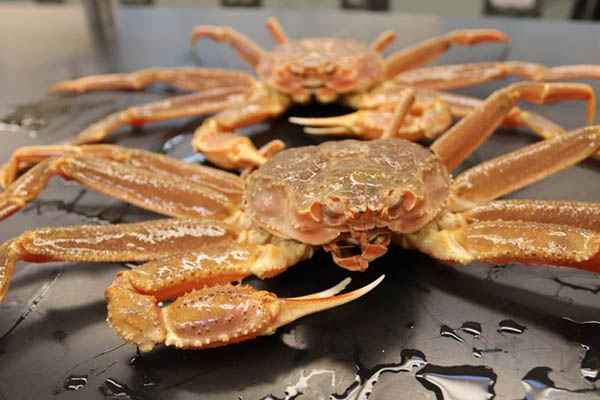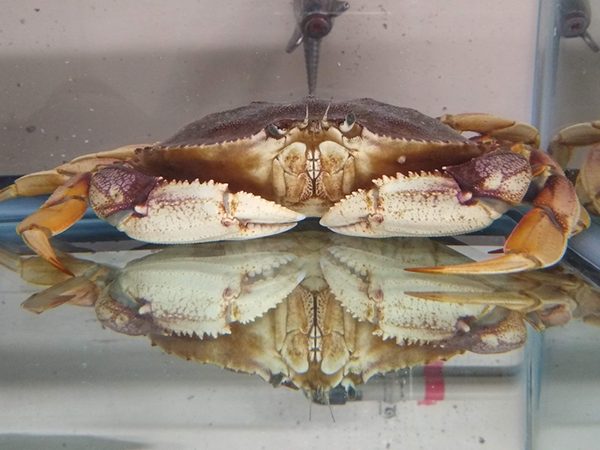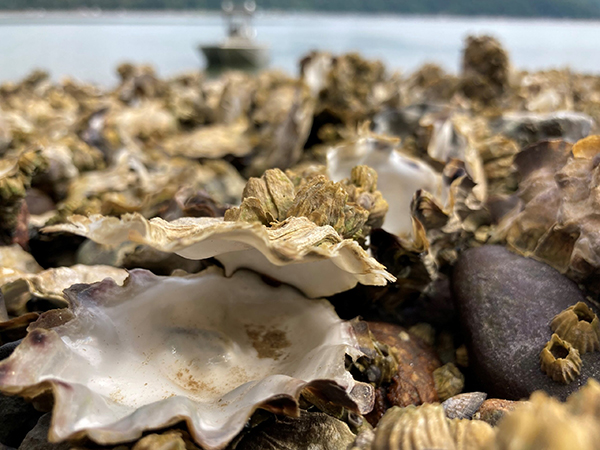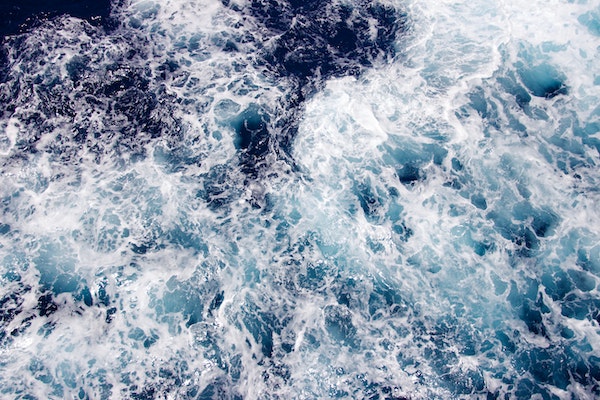Starvation was the likely cause of a mass mortality event during the eastern Bering Sea marine heatwave

In 2022, the Alaska snow crab fishery was closed for the first time in history due to a sudden, dramatic decline in adult and juvenile crabs. Scientists now believe the most likely cause of the decline was starvation and other factors linked to the 2018-2019 marine heatwave. The mortality event appears to be one of the largest reported losses due to marine heatwaves among the groups of animals that include fish and crustaceans globally.
“During the marine heatwave, snow crabs faced a triple threat,” said Cody Szuwalski, lead author and Alaska Fisheries Science Center stock assessment scientist. “Their metabolism increased, so they needed more food; their habitat was reduced so there was less area to forage; and crabs caught in our survey weighed less than usual. These conditions likely set them up for the dramatic decline we saw in 2021.”
In this study, scientists considered factors that cause mortality, such as directed fishing, bycatch, cannibalism, disease, predation from Pacific cod and increased ocean temperatures. Despite unprecedented marine heatwave conditions, ocean temperatures were still within the upper extent of what snow crabs could tolerate. However, scientists suspect that the warmer water temperatures affected snow crab metabolism.
“All of these factors cause some mortality, but only temperature and population size could explain the increase in mortality during the heatwave on such a scale in our models,” said Szuwalski. “High temperatures and large population sizes suggest starvation was a likely cause of the decline.”
Scientists, through lab tests, demonstrated that snow crab metabolism increases under rising water temperatures. For example, the caloric requirements for snow crab in the lab nearly doubled in water temperatures ranging from 0 to 3 degrees Celsius. This is roughly the change experienced by immature crabs in the eastern Bering Sea from 2017 to 2018.
Data collected during research surveys on the weight of various ages of juvenile snow crab support the hypothesis that young crab were not getting enough to eat. In 2017, a crab with a 75-millimeter-wide shell weighed 156 grams on average. In 2018, this same-sized crab was roughly 25 grams lighter, weighing around 104 grams – a 15 percent decline in body weight.
Scientists also looked at the size of the area where the snow crabs were captured during their 2018 research survey. They noted that the crab was being caught in a smaller area than normal –the smallest relative to historic habitat in the survey’s history.
“The unprecedented caloric demands coupled with a small area from which to forage relative to historical grounds provide more evidence to support the model conclusions that starvation likely played a key role in the snow crab decline,” said Mike Litzow, director, Alaska Fisheries Science Center’s Kodiak Lab. “This event mirrors what happened to Pacific cod in the Gulf of Alaska in 2016 during a marine heatwave. We also suspect some cannibalism was occurring given the overlap between adult and juvenile crabs in the same small area.”
Remarkably, new research from NOAA suggests that commercially important Alaska snow crab may be well-adapted to survive levels of acidity predicted 200 years into the future. NOAA Fisheries’ Alaska Fisheries Science Center biologists led a team of experts in the first research to look at the impacts of ocean acidification on snow crabs. The team conducted laboratory experiments evaluating long-term effects on multiple states of the crab lifecycle including embryos, larvae and adults. They found that no life stage was adversely affected by levels of acidity that the Bering Sea is predicted to reach over the next two centuries.
“It’s exciting to get a different answer than you expected,” said Chris Long, study leader and NOAA Fisheries, Alaska Fisheries Science Center. “We’ve found many marine species, including some other crab species in Alaska, to be vulnerable to acidification. Snow crab seem to be resilient. It’s good news for the first time.”
Snow crab is one of the most abundant species in the bottom-dwelling ecosystem of the eastern Bering Sea. It supports an important commercial fishery, generating an average of $150 million annually from 2012 to 2021. In 2021, 59 boats fished for snow crabs and brought $219 million into fishing communities. As a result of the population decline, the state of Alaska subsequently announced the closure of the commercial snow crab fishery for the 2022–2023 season.
Now that you've reached the end of the article ...
… please consider supporting GSA’s mission to advance responsible seafood practices through education, advocacy and third-party assurances. The Advocate aims to document the evolution of responsible seafood practices and share the expansive knowledge of our vast network of contributors.
By becoming a Global Seafood Alliance member, you’re ensuring that all of the pre-competitive work we do through member benefits, resources and events can continue. Individual membership costs just $50 a year.
Not a GSA member? Join us.
Author
-
Responsible Seafood Advocate
[103,114,111,46,100,111,111,102,97,101,115,108,97,98,111,108,103,64,114,111,116,105,100,101]
Tagged With
Related Posts

Fisheries
Could losing a sense of smell explain why crab populations are declining?
A study finds ocean acidification causes Dungeness crabs to sniff less frequently, which may contribute to the crab population collapse.

Responsibility
NOAA awards $4.2 million to study stressors facing Dungeness crab, other marine life under climate change
NOAA will help fund a study looking into how stressors related to climate change impact Dungeness crab and marine life off the Pacific coast.

Responsibility
2021 heat wave created ‘perfect storm’ for shellfish die-off
Researchers have produced the first comprehensive report detailing the impacts of the 2021 Pacific Northwest heat wave on shellfish.

Fisheries
Study: Coastal fisheries are resilient in the face of marine heatwaves
Marine heatwaves are not having a lasting effect on fish communities with major commercial importance, according to Rutgers-led research.



